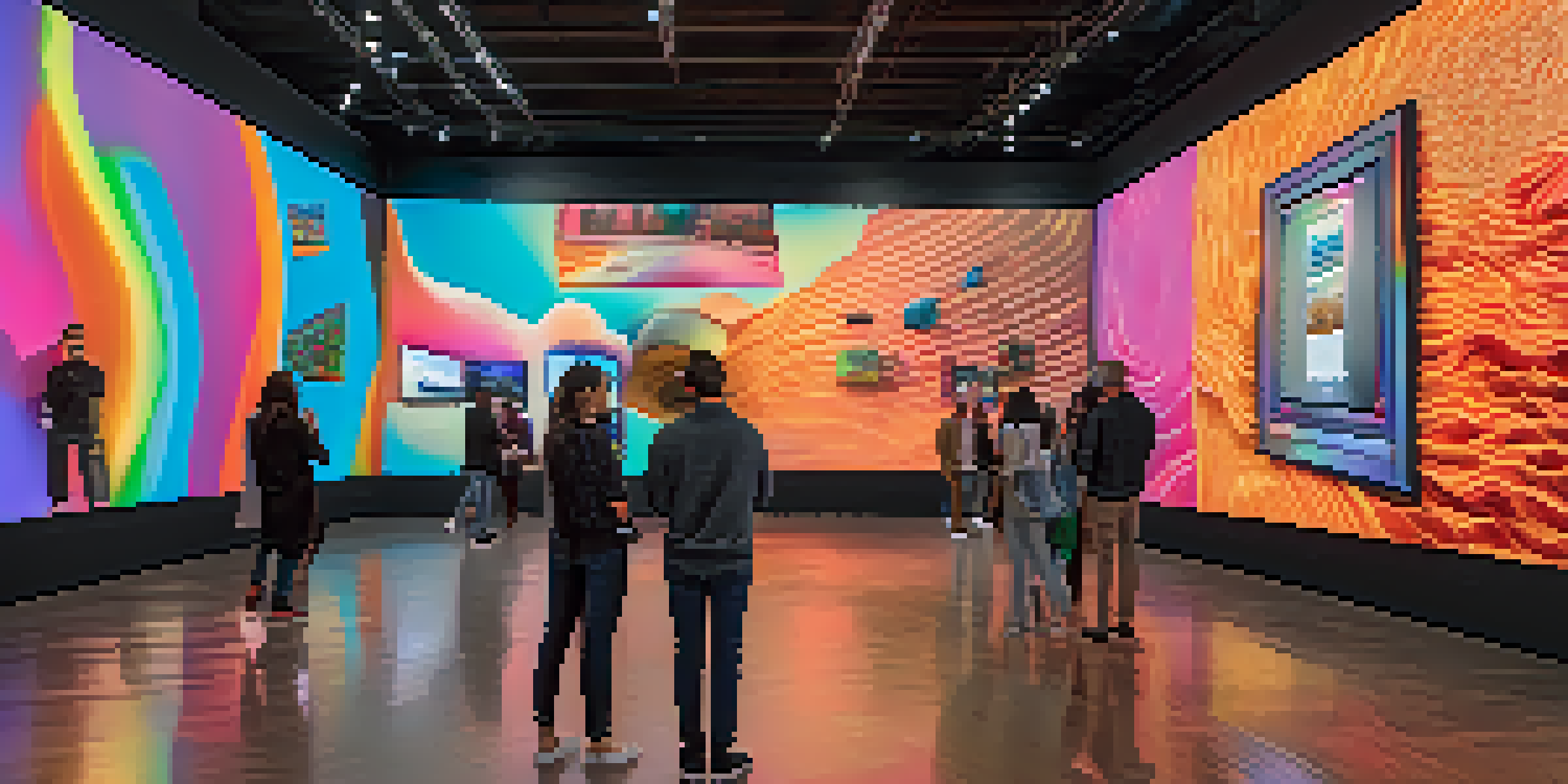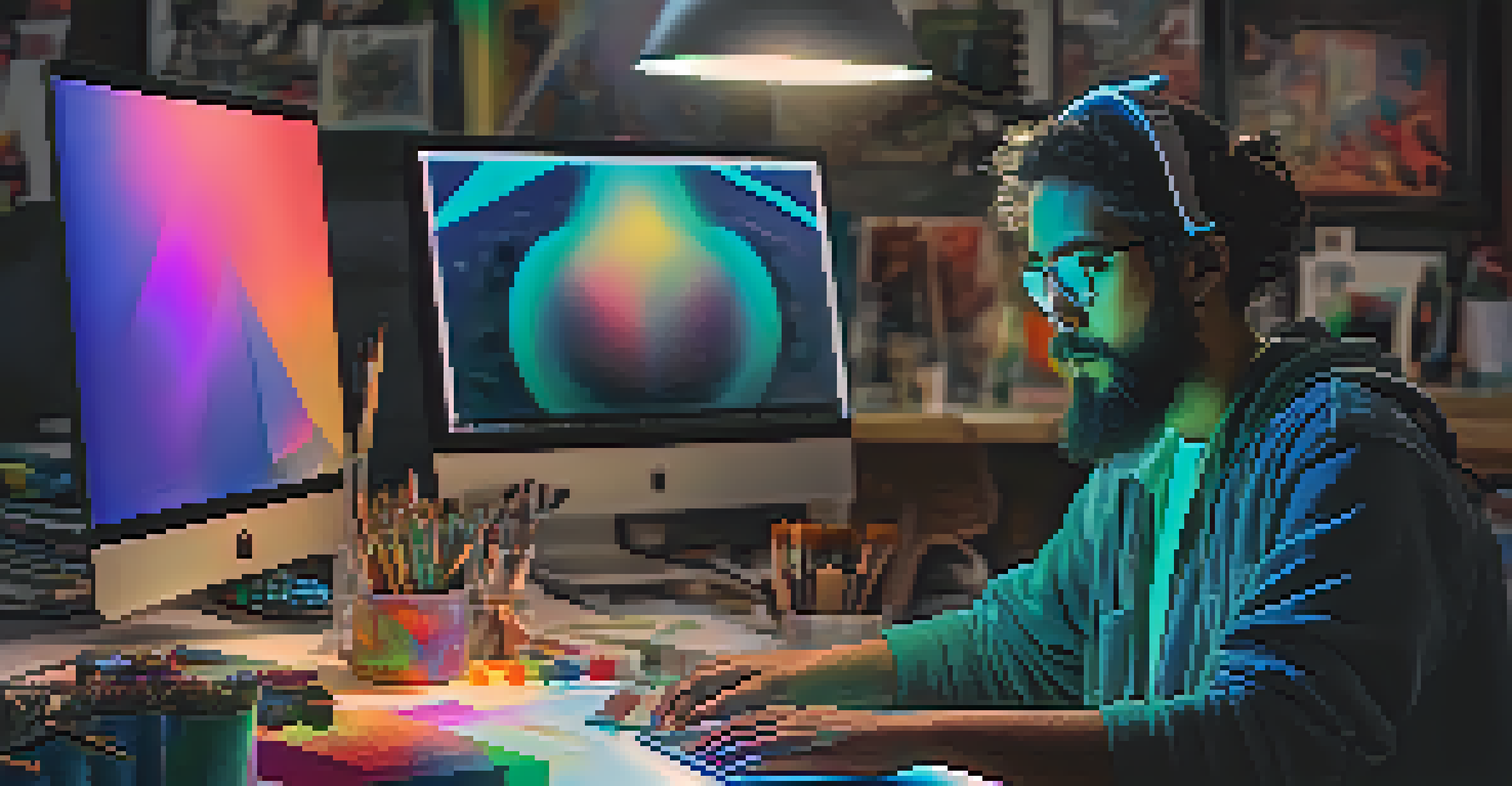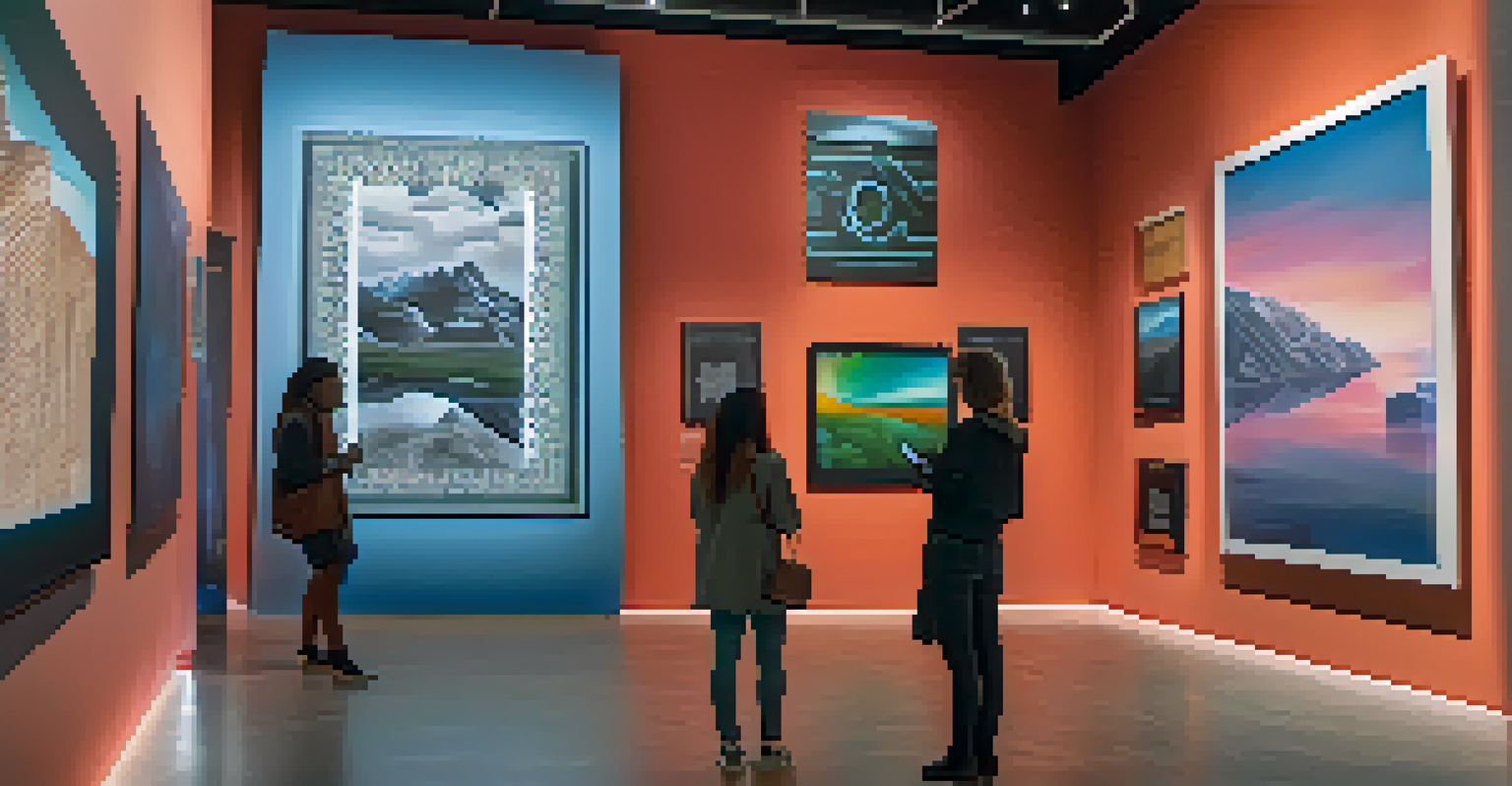Augmented Reality Museums: The Role of NFTs in Exhibits

What Are Augmented Reality Museums?
Augmented reality (AR) museums blend the physical and digital worlds, creating immersive experiences for visitors. Rather than just viewing art or artifacts, guests can interact with digital overlays that provide additional context and information. Imagine walking through a gallery and seeing a painting come to life with animations or historical narratives projected around it.
The future of art is not about the physical space, but about the digital experience that connects us all.
These museums utilize smartphones or AR glasses to enhance the visitor's journey, making art and history more engaging. The technology allows for interactive exhibits where information is not just read but experienced. Visitors can explore layers of content, from artist interviews to 3D models, deepening their understanding of the exhibits.
AR museums cater to a diverse audience, from tech-savvy millennials to families looking for educational outings. By merging technology with culture, these museums are revolutionizing the way we engage with art and history, making it accessible and exciting for everyone.
The Rise of NFTs in the Art World
Non-fungible tokens (NFTs) have taken the art world by storm, allowing artists to sell digital artwork with verifiable ownership. Unlike traditional art, which can be duplicated, NFTs provide a unique digital certificate that authenticates ownership and provenance. This innovation has opened new avenues for artists to monetize their work and reach global audiences.

The appeal of NFTs lies in their ability to represent not just artwork but also moments, experiences, and even memories. Artists can create limited editions or unique pieces, encouraging collectors to invest in digital art much like traditional pieces. This shift is reshaping how we perceive value in the art world.
AR Museums Enhance Visitor Engagement
Augmented reality museums transform static displays into immersive experiences, allowing visitors to interact with art through digital overlays.
Moreover, NFTs can be linked to augmented reality experiences, enhancing their appeal. For instance, owning an NFT could grant exclusive access to AR content that makes the artwork more interactive, bridging the gap between physical and digital art forms.
How NFTs Enhance AR Museum Experiences
NFTs can significantly enrich the experience in augmented reality museums by offering unique digital content. For instance, a visitor could purchase an NFT linked to a specific exhibit, unlocking exclusive AR features that enhance their understanding and enjoyment. This creates a more personalized experience, making each visit unique.
Art is not what you see, but what you make others see.
Imagine walking through an AR museum, scanning a QR code next to a painting, and unveiling a digital art piece that only NFT holders can see. This exclusivity not only elevates the visitor's experience but also creates a sense of community among collectors and art enthusiasts.
Furthermore, integrating NFTs into AR exhibits encourages engagement and interaction, allowing visitors to connect with the art on a deeper level. By merging these two technologies, museums can offer a multifaceted experience that appeals to both traditional art lovers and tech enthusiasts.
Benefits of Augmented Reality in Museums
Augmented reality brings numerous benefits to museums, enhancing the overall visitor experience. For starters, AR can transform static displays into dynamic, interactive experiences that educate and entertain. This approach can capture visitors' attention and keep them engaged longer than traditional exhibits.
Additionally, AR can provide accessibility features, such as translations for non-native speakers or audio descriptions for visually impaired guests. This inclusivity ensures that everyone can enjoy and learn from the exhibits, making art and history more accessible to all.
NFTs Revolutionize Art Ownership
Non-fungible tokens provide unique digital certificates that authenticate ownership, enabling artists to monetize their work and engage collectors.
Finally, AR technology allows museums to update and rotate content easily, keeping exhibits fresh and relevant. This flexibility not only attracts repeat visitors but also enables museums to respond to current events or trends, ensuring they remain an integral part of the cultural conversation.
Challenges of Implementing AR and NFTs
Despite their benefits, integrating augmented reality and NFTs into museums is not without challenges. One major hurdle is the cost of technology and infrastructure needed to implement AR experiences. Museums, especially smaller ones, may struggle to find the necessary funding to invest in these innovations.
Another challenge is ensuring that both staff and visitors are tech-savvy enough to navigate AR experiences and understand NFTs. Educational initiatives are crucial to help everyone engage with these technologies, preventing potential frustration and enhancing the overall experience.
Additionally, the environmental impact of NFTs has sparked debates in the art community. While they create unique opportunities for artists, the energy consumption associated with blockchain transactions raises concerns. Museums must weigh these environmental considerations when adopting NFT technology.
Future Trends in AR Museums and NFT Integration
As technology continues to evolve, the future of augmented reality museums integrated with NFTs looks promising. We can expect more museums to experiment with these technologies, offering even richer and more interactive experiences. This trend could lead to entirely new forms of artistic expression that blend physical and digital mediums seamlessly.
Moreover, the rise of virtual reality (VR) might complement AR experiences in museums. Imagine stepping into a fully immersive environment where you can interact with art and history from your home. This could expand the museum's reach, attracting global audiences who may not have the opportunity to visit physically.
Combining AR and NFTs for Unique Experiences
Integrating NFTs into AR exhibits offers personalized content, fostering deeper connections between visitors and the artwork.
Finally, as more artists embrace NFTs, we may see a shift in how art is valued and collected. Museums could become pivotal players in this ecosystem, acting as curators and educators about the implications of owning digital art, ultimately reshaping the art landscape.
Conclusion: The Future of Art and Technology
In conclusion, the integration of augmented reality and NFTs in museums represents a significant shift in how we experience art and culture. These technologies not only enhance visitor engagement but also offer new opportunities for artists and collectors alike. As museums adapt to this digital transformation, they have the potential to create more inclusive, interactive, and innovative experiences.
By embracing AR and NFTs, museums can break down traditional barriers, making art more accessible and relevant to a diverse audience. This evolution fosters a deeper appreciation for art, encouraging conversations about its value and meaning in the digital age.

Ultimately, the collaboration between technology and creativity will continue to shape the future of museums. As we move forward, we can look forward to exciting developments that redefine our relationship with art and culture in ways we’ve yet to imagine.